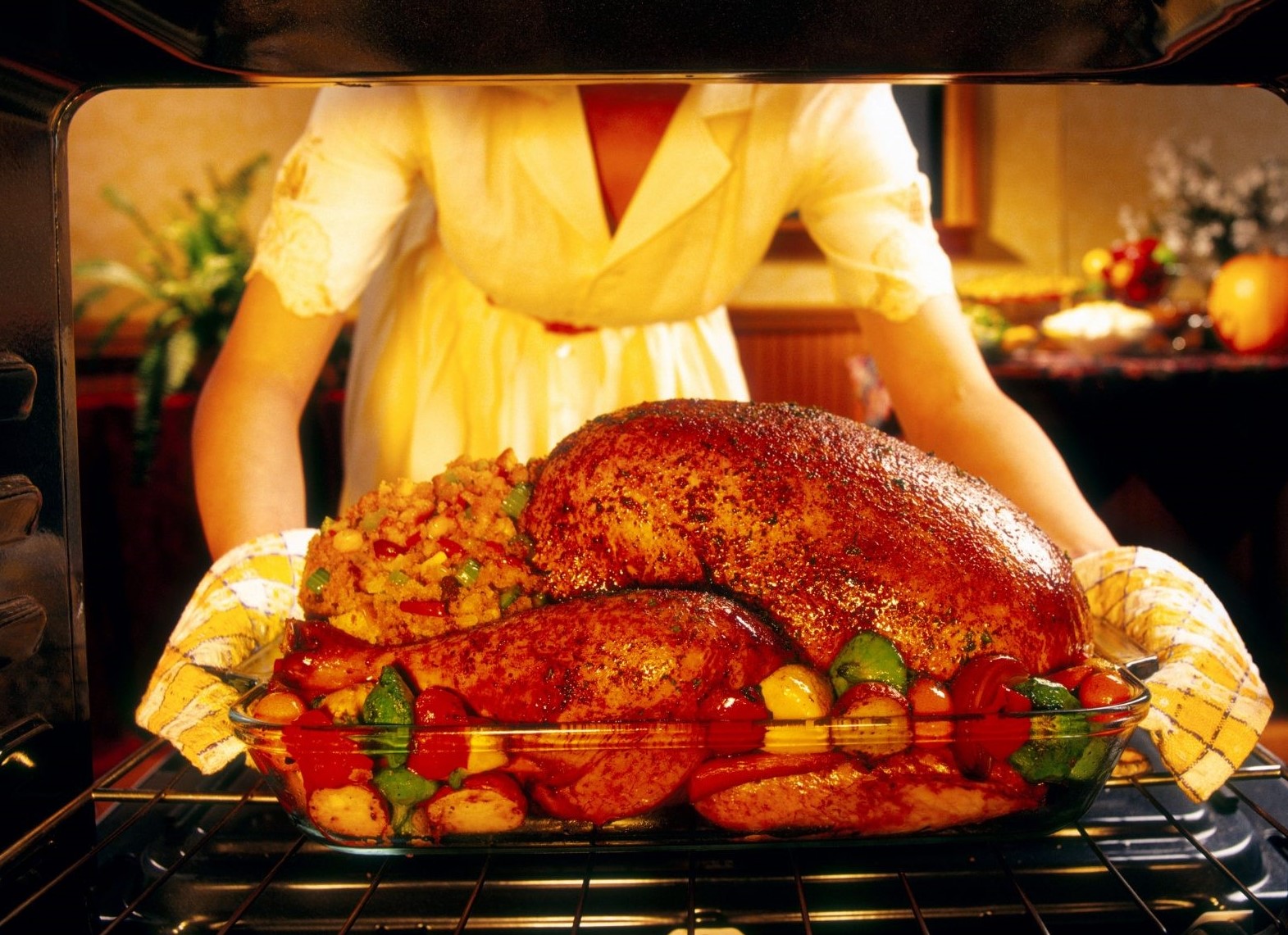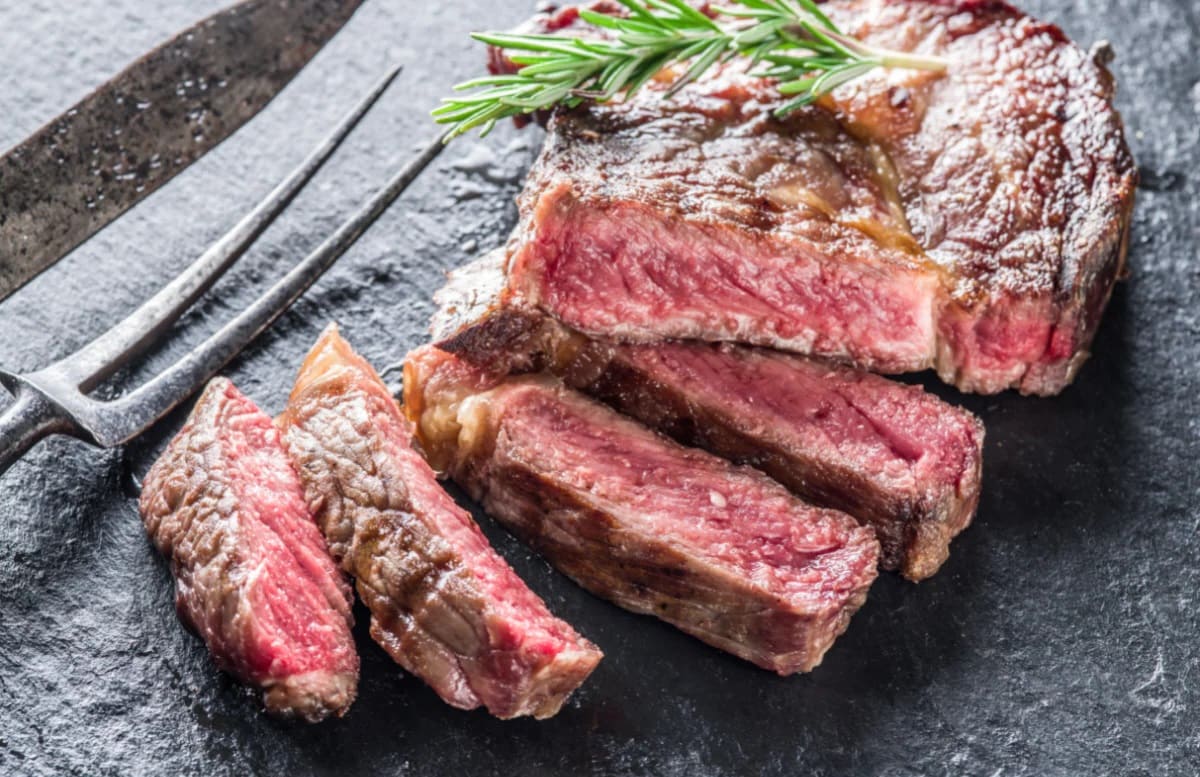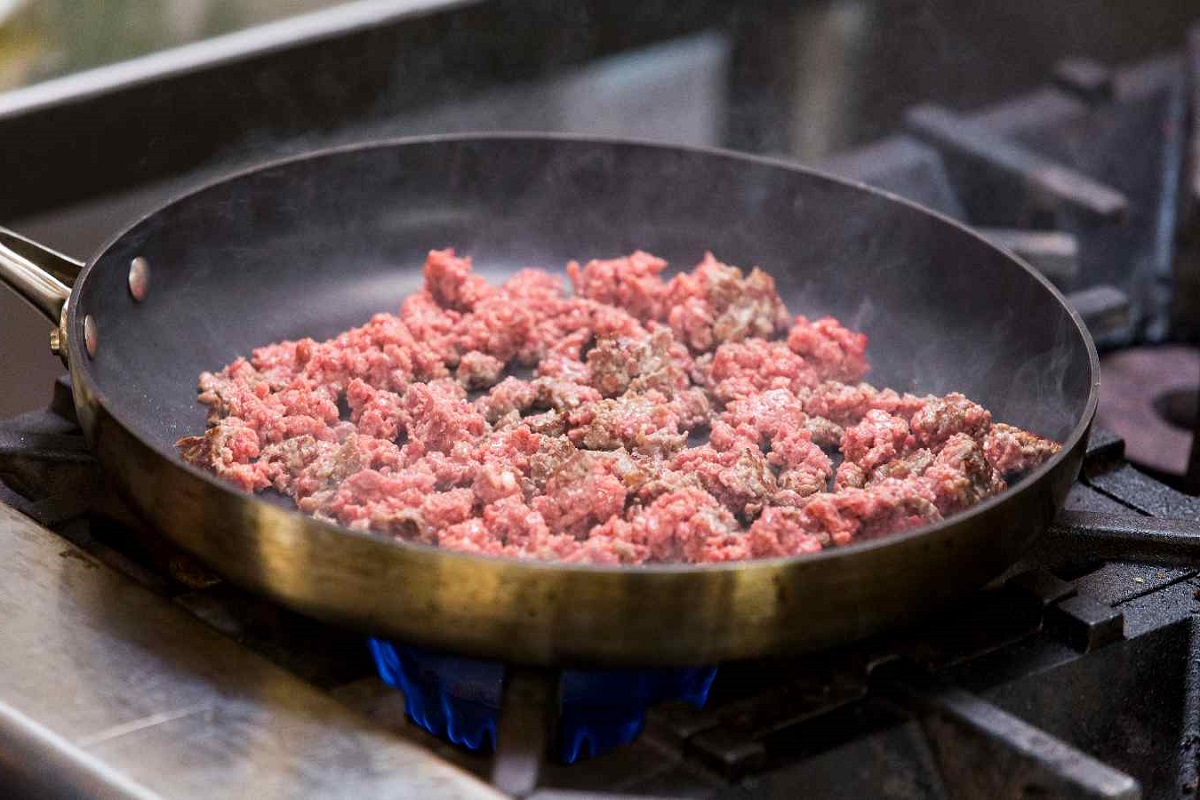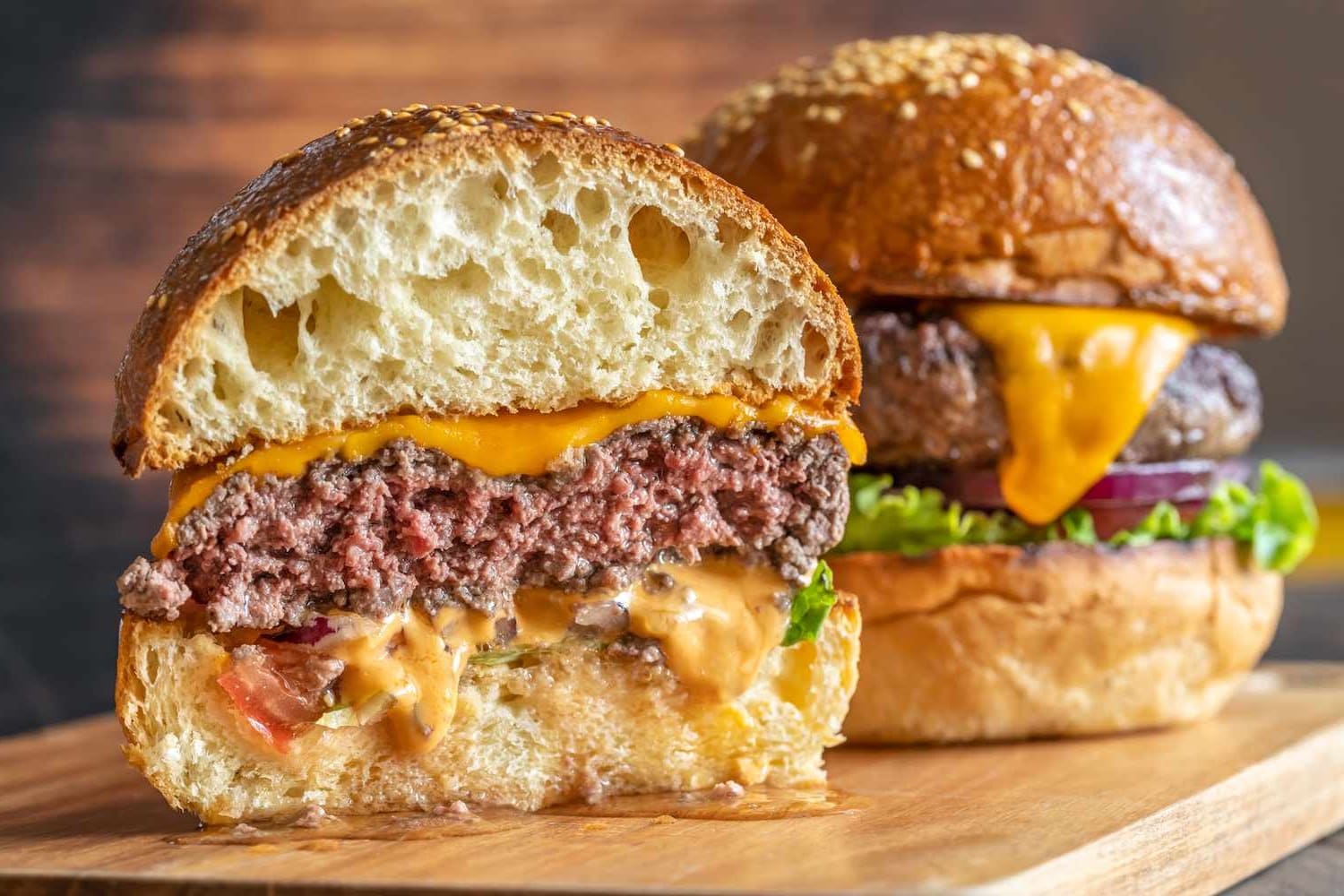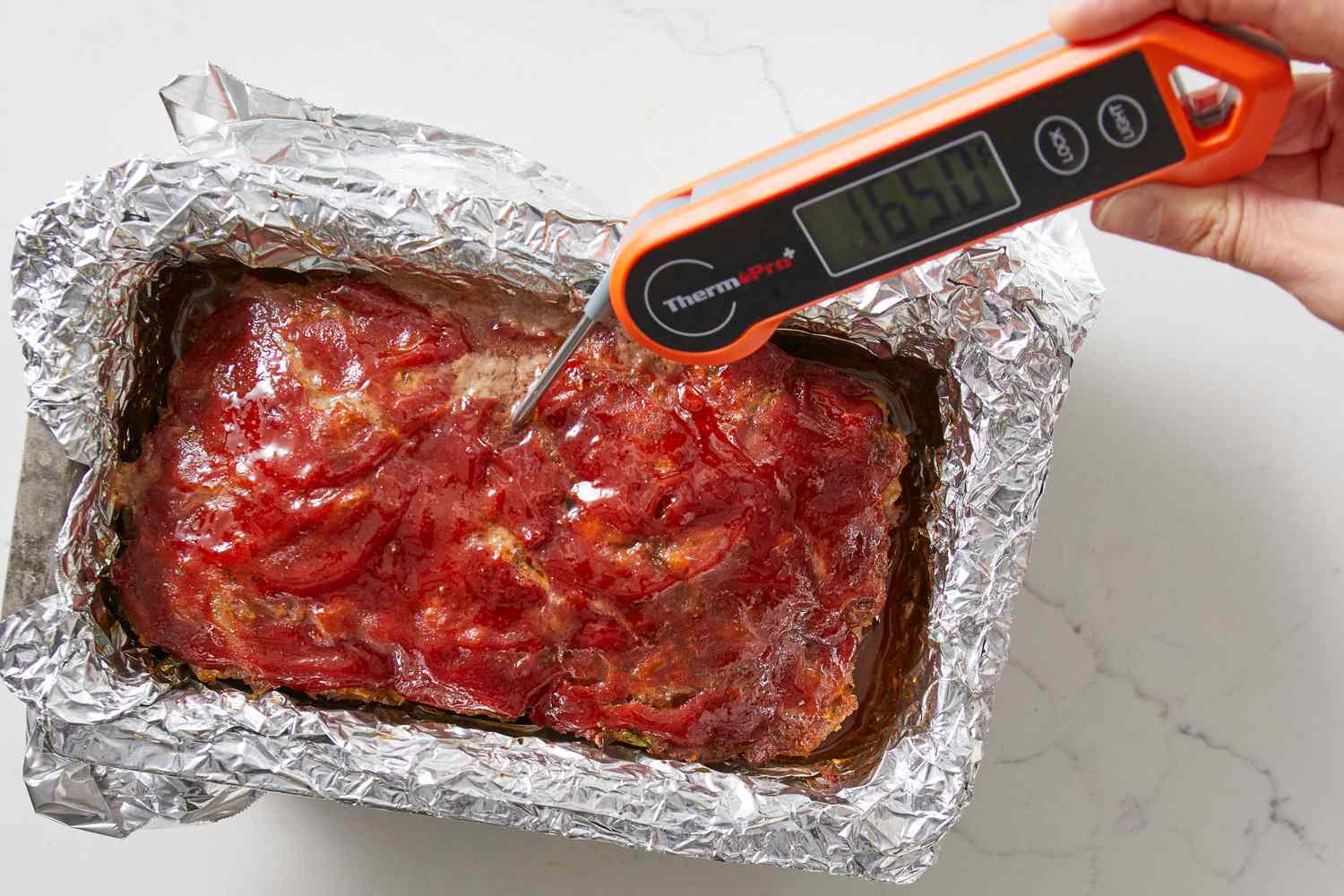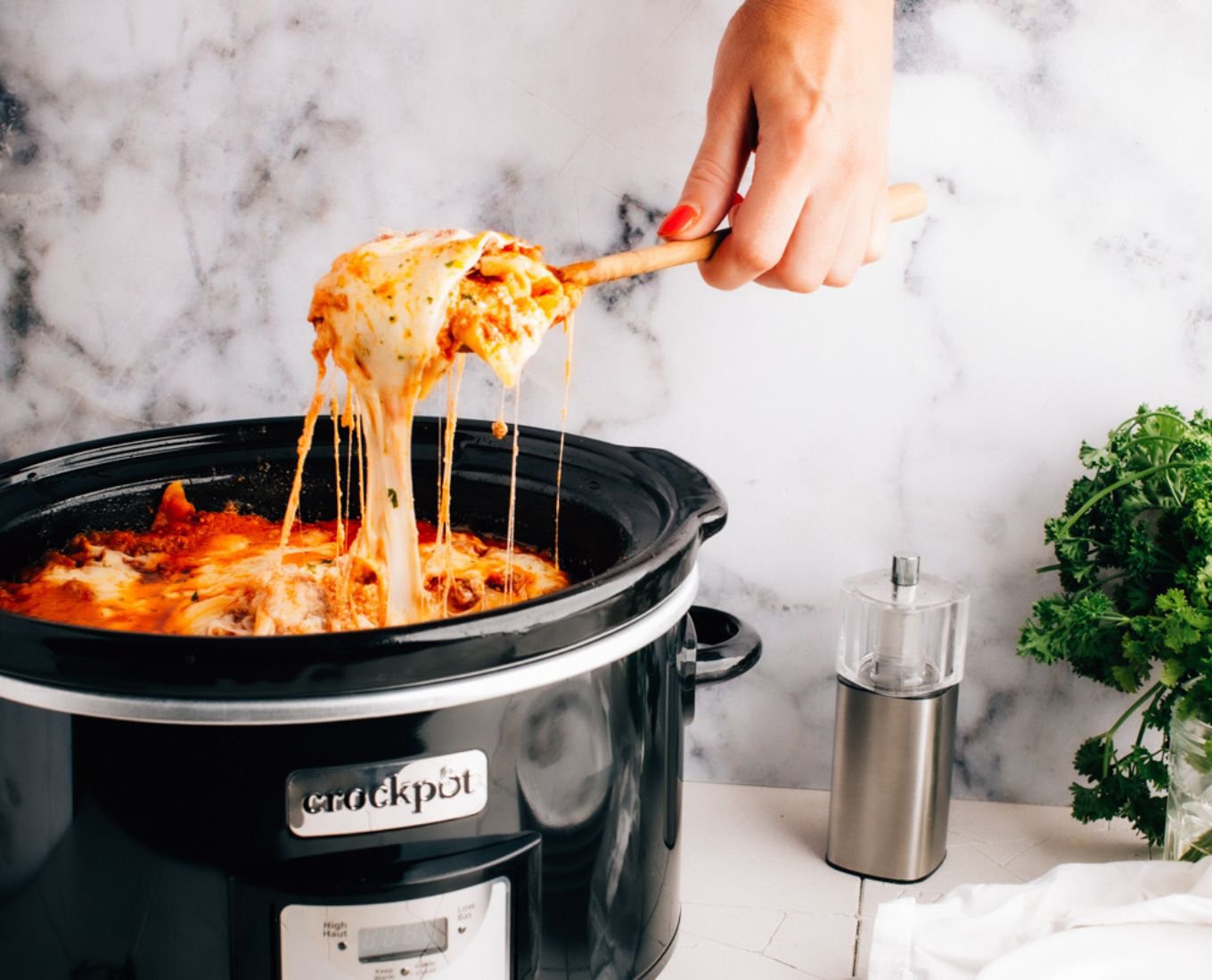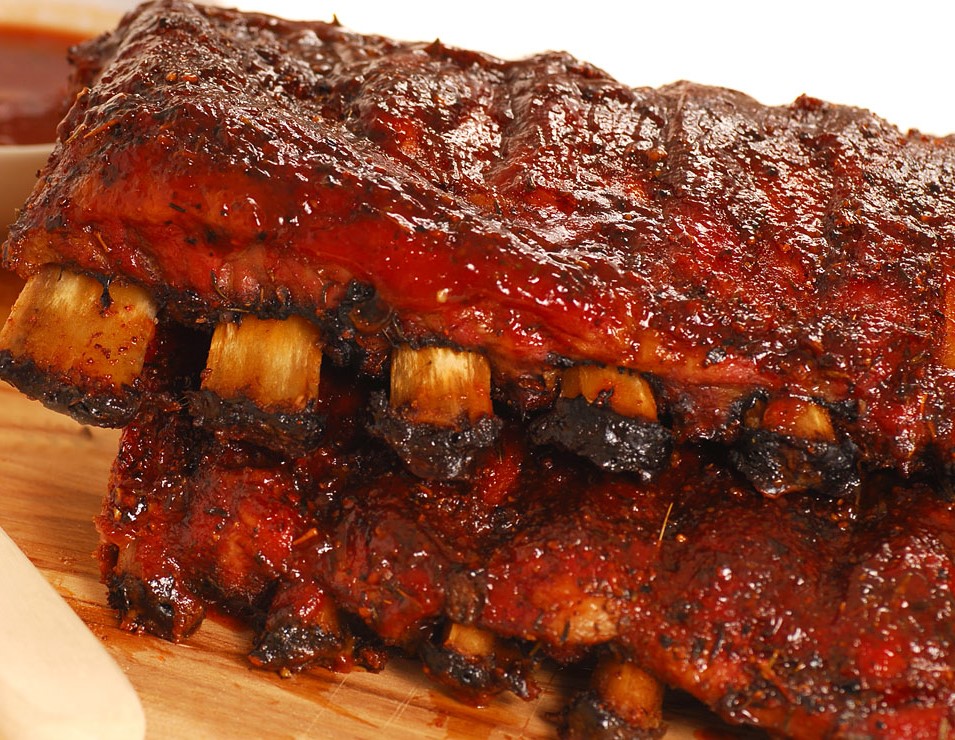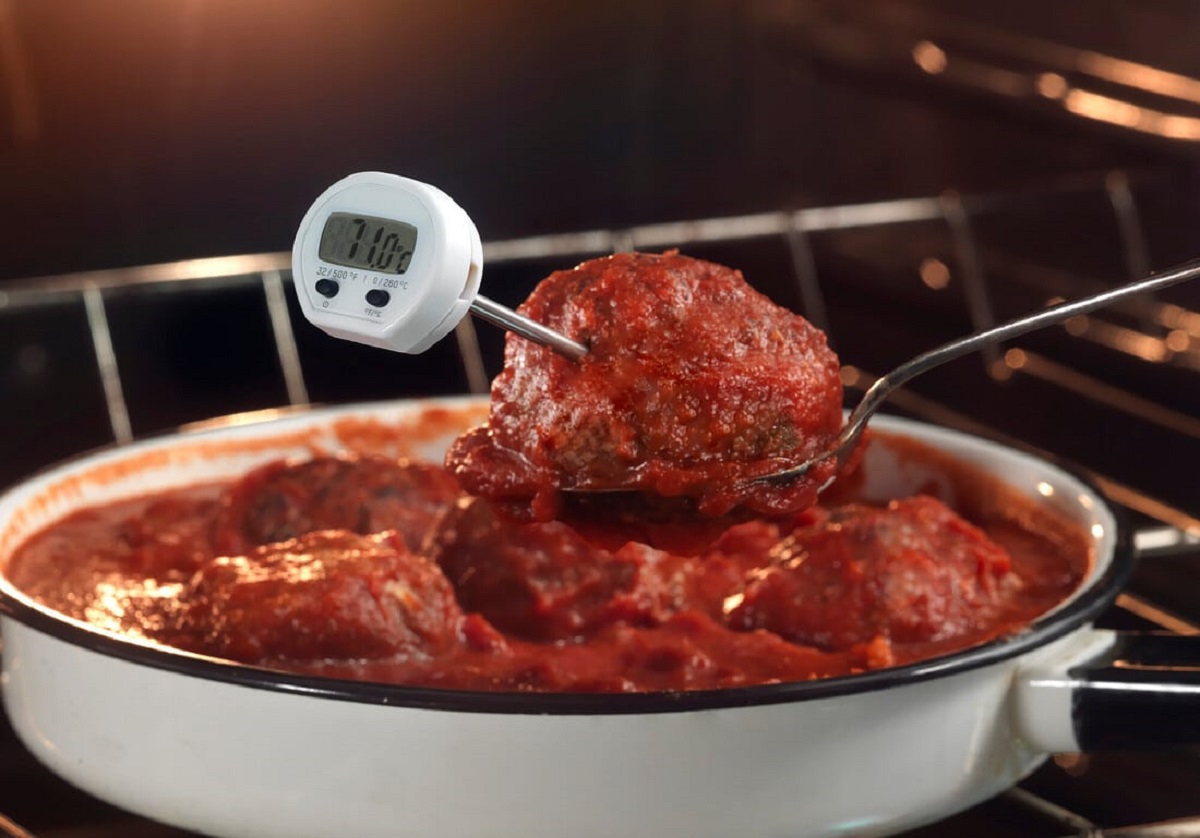Home>Culinary & Beverages>Cooking Times And Temperatures For Whole Pig
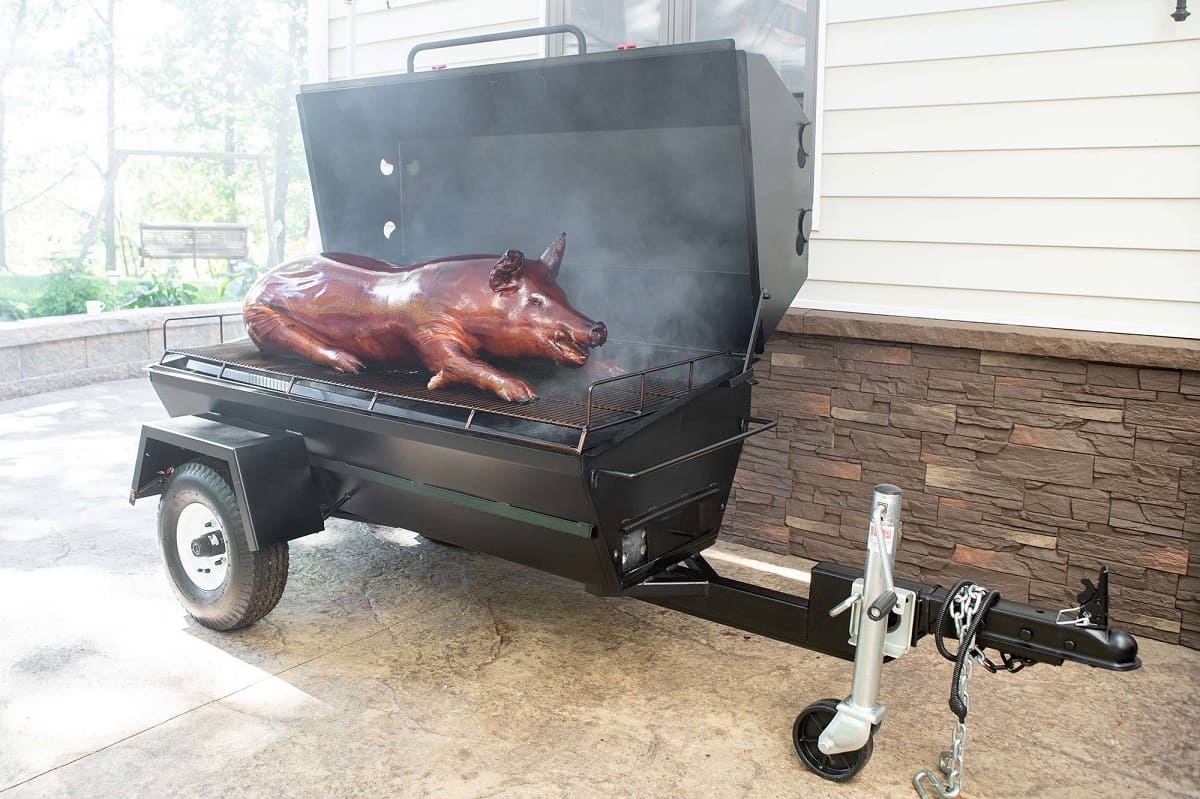

Culinary & Beverages
Cooking Times And Temperatures For Whole Pig
Published: February 21, 2024
Discover the ideal cooking times and temperatures for a whole pig with our comprehensive culinary guide. Perfect your pig roast with expert tips and techniques. Explore more culinary and beverage insights.
(Many of the links in this article redirect to a specific reviewed product. Your purchase of these products through affiliate links helps to generate commission for Temperatures.com, at no extra cost. Learn more)
Table of Contents
Introduction
Cooking a whole pig is a time-honored tradition that brings people together for a feast of epic proportions. Whether you're hosting a backyard barbecue, a festive luau, or a special celebration, roasting a whole pig is sure to impress your guests and create unforgettable memories. The process of cooking a whole pig requires careful planning, attention to detail, and a deep understanding of cooking times and temperatures to ensure that the meat is succulent, flavorful, and cooked to perfection.
From selecting the right size pig to choosing the ideal cooking method, every step in the process plays a crucial role in achieving a mouthwatering result. As you embark on this culinary adventure, you'll discover the art and science of transforming a whole pig into a delectable centerpiece that will delight the senses and bring joy to all who partake in the feast.
In the following sections, we will delve into the essential aspects of cooking a whole pig, including selecting the right size pig, preparing it for cooking, exploring various cooking methods, understanding recommended cooking times and temperatures, checking for doneness, and finally, resting and carving the pig. By the end of this guide, you will be equipped with the knowledge and confidence to embark on your own whole pig cooking journey, creating a culinary masterpiece that will be savored and celebrated by all who gather around the table. So, let's dive in and uncover the secrets to mastering the art of cooking a whole pig!
Selecting the Right Size Pig
Selecting the right size pig is a crucial first step in preparing for a whole pig roast. The size of the pig you choose will depend on the number of guests you plan to serve and the cooking equipment available. When it comes to whole pigs, size matters, and finding the perfect balance is essential for a successful and delicious outcome.
The general rule of thumb is to estimate about 1 to 1.5 pounds of whole pig per person. This estimation accounts for the weight of the pig before cooking, as there will be some loss of weight during the cooking process due to moisture evaporation and rendering of fat. For example, if you're expecting 50 guests, a pig weighing between 50 to 75 pounds would be suitable.
It's important to consider the cooking equipment you'll be using. For instance, if you plan to roast the pig on a spit over an open flame, you'll need to ensure that the pig fits securely on the spit and can rotate freely without coming into contact with the heat source. If you're using a roasting box or pit, you'll need to measure the dimensions of the cooking vessel to determine the maximum size of pig that can be accommodated.
Additionally, the size of the pig will impact the overall cooking time. A larger pig will naturally require a longer cooking time to ensure that the meat is thoroughly cooked and tender. Conversely, a smaller pig may cook more quickly but could be prone to drying out if not monitored closely.
When selecting a pig, consider the quality of the meat as well. Look for a pig with firm, pink flesh and a generous layer of fat, which will contribute to the succulence and flavor of the finished dish. Whether you source the pig from a local farm, butcher, or specialty supplier, communicate your specific requirements and seek guidance to ensure that you obtain a high-quality pig that meets your needs.
By carefully considering the number of guests, cooking equipment, cooking time, and meat quality, you can select the right size pig that sets the stage for a spectacular whole pig roast, delighting your guests with a sumptuous and memorable culinary experience.
Preparing the Pig for Cooking
Before the whole pig can be transformed into a delectable masterpiece, it must undergo meticulous preparation to ensure optimal flavor, tenderness, and safety during the cooking process. The preparation phase involves several essential steps that are crucial for achieving a succulent and evenly cooked result.
Cleaning and Trimming
The first step in preparing the pig for cooking involves thorough cleaning and trimming. The pig should be cleaned both inside and out, removing any residual blood, organs, and debris from the cavity. A gentle rinse with cold water will help to remove any surface impurities. Additionally, any excess hair should be singed off using a culinary torch or carefully shaved off with a sharp knife, ensuring that the skin is clean and free from any unwanted remnants.
Seasoning and Flavoring
Once the pig is clean and trimmed, it's time to infuse it with flavor. A generous application of seasoning both inside and outside the pig is essential for enhancing its taste. A classic seasoning blend often includes a mixture of salt, pepper, garlic, herbs, and spices, which can be combined with oil or a flavorful marinade to create a robust and aromatic coating. Massaging the seasoning into the skin and flesh ensures that the flavors permeate the meat, resulting in a rich and savory taste throughout.
Securing and Trussing
To ensure even cooking and a visually appealing presentation, the pig should be securely fastened and trussed. This involves tucking the legs inward and securing them with kitchen twine or metal skewers to maintain a compact shape. Trussing the pig not only helps to retain its form during the cooking process but also promotes uniform heat distribution, allowing the meat to cook evenly and preventing any parts from becoming overcooked or undercooked.
Flavorful Additions
For an extra layer of flavor and moisture, consider incorporating aromatic elements into the cavity of the pig. Sliced citrus fruits, onions, garlic, fresh herbs, and other flavorful ingredients can be placed inside the cavity to infuse the meat with additional aromatics and succulence. These additions contribute to the overall complexity of flavors and add a delightful essence to the finished dish.
By meticulously cleaning, seasoning, securing, and enhancing the pig with flavorful additions, you set the stage for a successful and mouthwatering whole pig roast. The preparation process not only ensures that the pig is primed for cooking but also lays the foundation for a culinary masterpiece that will captivate the senses and delight all who gather to partake in the feast.
Cooking Methods for Whole Pig
When it comes to cooking a whole pig, there are several methods that can be employed to achieve succulent, flavorful, and tender results. Each cooking method offers its own unique approach to transforming the pig into a delectable centerpiece, allowing for diverse flavor profiles and textures. The choice of cooking method often depends on factors such as available equipment, desired cooking time, and the overall culinary experience you wish to create.
Spit Roasting
Spit roasting, also known as rotisserie cooking, is a traditional and visually captivating method of cooking a whole pig. The pig is secured onto a spit, which is then rotated slowly over an open flame or within a specialized rotisserie oven. This method allows for even cooking and basting as the pig rotates, ensuring that the meat remains moist and tender while developing a crispy, golden-brown skin. Spit roasting is not only a practical cooking method but also a spectacle that adds an element of drama and excitement to any outdoor gathering.
Pit Roasting
Pit roasting involves cooking the whole pig in an underground pit, creating a rustic and time-honored cooking experience. The pig is placed on a sturdy rack or directly on a bed of hot coals within the pit, which is then covered with layers of soil and left to slow-cook for several hours. This method imparts a distinct smoky flavor to the meat while allowing for gentle, indirect heat to penetrate and tenderize the pig, resulting in exceptionally moist and flavorful meat. Pit roasting is often associated with communal celebrations and festive occasions, adding a sense of tradition and camaraderie to the cooking process.
Box Roasting
Box roasting, also known as caja china or Cajun microwave, involves cooking the whole pig in a specialized roasting box. The pig is placed inside the box, which is then covered with a lid and lined with hot coals or heat source on top. This method creates an environment of radiant heat, effectively roasting the pig from all sides and sealing in its natural juices. Box roasting offers a convenient and efficient way to cook a whole pig, producing tender and succulent meat with a beautifully caramelized exterior. The enclosed nature of the roasting box also helps to retain the pig's natural flavors, resulting in a delectable and aromatic outcome.
Smoker Roasting
Smoker roasting involves cooking the whole pig in a smoker, infusing the meat with rich, smoky flavors. This method utilizes low and slow heat, allowing the pig to cook gently over a prolonged period, resulting in exceptionally tender and moist meat. The use of wood chips or chunks adds layers of complexity to the flavor profile, imparting a distinctive smokiness that enhances the overall dining experience. Smoker roasting offers a versatile approach to cooking a whole pig, allowing for customization of flavors through the selection of different wood types and seasoning blends.
Each of these cooking methods presents a unique opportunity to create a memorable and mouthwatering whole pig roast, showcasing the diverse culinary traditions and techniques that have been cherished for generations. Whether you opt for the drama of spit roasting, the rustic charm of pit roasting, the convenience of box roasting, or the rich flavors of smoker roasting, each method holds the promise of delivering a spectacular and unforgettable dining experience.
Recommended Cooking Times and Temperatures
Cooking a whole pig to perfection requires careful attention to cooking times and temperatures to ensure that the meat is not only safe to consume but also tender and flavorful. The recommended cooking times and temperatures for a whole pig roast are influenced by various factors, including the size of the pig, the chosen cooking method, and the desired level of doneness.
Spit Roasting
When spit roasting a whole pig, the recommended cooking temperature is typically between 250°F to 300°F (121°C to 149°C). At this temperature range, the pig cooks slowly and evenly, allowing the heat to penetrate the meat while rendering the fat, resulting in a succulent and tender outcome. The cooking time for spit roasting can vary depending on the size of the pig, but as a general guideline, plan for approximately 20 to 24 hours of cooking time for a 100-pound pig. It's important to monitor the internal temperature of the pig using a meat thermometer, aiming for a minimum internal temperature of 160°F (71°C) in the thickest part of the meat to ensure that it is safe to consume.
Pit Roasting
For pit roasting, the recommended cooking temperature is similar to spit roasting, ranging from 250°F to 300°F (121°C to 149°C). The cooking time for pit roasting a whole pig can vary widely based on the size of the pig and the depth of the pit. As a general estimate, plan for approximately 12 to 16 hours of cooking time for a 100-pound pig. It's essential to maintain a consistent cooking temperature throughout the process, periodically checking the internal temperature of the pig to ensure that it reaches a safe minimum internal temperature of 160°F (71°C) before serving.
Box Roasting
When using a roasting box, the recommended cooking temperature is typically around 325°F to 350°F (163°C to 177°C). The enclosed nature of the roasting box allows for efficient heat distribution, resulting in a faster cooking time compared to other methods. For a 100-pound pig, plan for approximately 4 to 6 hours of cooking time, ensuring that the internal temperature of the pig reaches a minimum of 160°F (71°C) before removing it from the roasting box.
Smoker Roasting
In smoker roasting, the recommended cooking temperature ranges from 225°F to 250°F (107°C to 121°C). The low and slow cooking process in the smoker allows the pig to absorb the rich, smoky flavors while becoming tender and juicy. The cooking time for smoker roasting can vary, but as a general guideline, plan for approximately 18 to 22 hours of cooking time for a 100-pound pig, ensuring that the internal temperature reaches a safe minimum of 160°F (71°C) before serving.
By adhering to the recommended cooking times and temperatures for the chosen cooking method, you can ensure that the whole pig is cooked to perfection, delivering a delectable and safe dining experience for all to enjoy.
Checking for Doneness
Ensuring that the whole pig is cooked to perfection is a critical step in the whole pig roasting process. Properly checking for doneness involves assessing both the internal temperature of the meat and its physical characteristics to guarantee that it is safe to consume and boasts the desired texture and flavor.
Internal Temperature
The most reliable method for determining the doneness of a whole pig is by measuring its internal temperature using a meat thermometer. When using a meat thermometer, it's essential to insert the probe into the thickest part of the pig, avoiding contact with bones, to obtain an accurate reading. The minimum safe internal temperature for whole pork, including a whole pig, is 160°F (71°C). This temperature ensures that any harmful bacteria are effectively destroyed, rendering the meat safe for consumption. It's important to verify the internal temperature in multiple locations to ensure uniform cooking throughout the pig, especially in areas that may cook at different rates, such as the shoulders and hams.
Physical Characteristics
In addition to monitoring the internal temperature, assessing the physical characteristics of the pig can provide valuable insights into its doneness. A properly cooked whole pig will exhibit several visual and textural cues indicating that it is ready to be served. The skin should be golden brown and crisp, with a satisfying crunch when tapped or carved. The meat should be tender and easily pull away from the bone, showcasing a succulent and juicy texture. Additionally, the juices released from the meat should run clear, indicating that the pig has reached the desired level of doneness.
Resting Period
Once the whole pig has been determined to be fully cooked, it's essential to allow it to rest before carving and serving. Allowing the pig to rest for approximately 20 to 30 minutes enables the juices to redistribute throughout the meat, ensuring that each slice is moist and flavorful. During this resting period, the internal temperature of the pig may continue to rise slightly, contributing to the overall succulence and tenderness of the meat.
By carefully assessing the internal temperature, physical characteristics, and allowing for a proper resting period, you can confidently confirm the doneness of the whole pig, setting the stage for a remarkable dining experience that celebrates the art of whole pig roasting.
Resting and Carving the Pig
After the whole pig has completed its journey to succulent perfection, it enters a crucial phase that ensures the culmination of the roasting process is nothing short of extraordinary. Resting and carving the pig are essential steps that elevate the dining experience, allowing the flavors to harmonize and the presentation to be as impressive as the taste.
Resting the Pig
Once the whole pig has reached the desired level of doneness, it is imperative to allow it to rest before carving. This resting period, typically lasting 20 to 30 minutes, serves a vital purpose. As the pig rests, the juices redistribute throughout the meat, resulting in a moist and tender texture in every slice. Additionally, the internal temperature of the pig may continue to rise slightly during this time, further enhancing its succulence and overall eating experience.
Carving the Pig
Carving a whole pig is a ceremonial and skillful art that adds a touch of spectacle to the dining occasion. The process of carving requires precision and finesse to ensure that each portion is expertly prepared and presented. Here are the key steps to effectively carve a whole pig:
1. Positioning
The whole pig should be securely placed on a sturdy surface, such as a large cutting board or serving platter, to facilitate the carving process. It's essential to have ample space and the necessary carving tools readily available.
2. Starting Point
Begin the carving process by carefully removing the skin from the pig. This can be achieved by making a shallow incision along the back and sides of the pig, allowing the skin to be peeled back to reveal the succulent meat beneath.
3. Meat Separation
Using a sharp carving knife or cleaver, separate the different sections of the pig, such as the shoulders, hams, and belly. Each section should be carved with precision, ensuring that the meat is presented in appealing portions.
4. Serving Presentation
As the succulent portions of meat are carved, they can be artfully arranged on a serving platter or directly onto individual plates. Garnishes, such as fresh herbs, citrus wedges, or decorative vegetables, can be added to enhance the visual appeal of the presentation.
Culinary Celebration
The act of resting and carving the whole pig marks the culmination of the roasting process and sets the stage for a culinary celebration. As each slice is expertly carved and presented, the aromas, textures, and flavors of the succulent meat come together to create a dining experience that is both visually stunning and gastronomically satisfying. The art of resting and carving the pig transforms the whole pig roast into a memorable feast, where every slice tells a story of culinary craftsmanship and communal enjoyment.
Conclusion
In conclusion, the art of cooking a whole pig is a culinary journey that encompasses tradition, skill, and the joy of bringing people together for a shared dining experience. From the careful selection of the right size pig to the meticulous preparation, diverse cooking methods, and the adherence to recommended cooking times and temperatures, every step in the process contributes to the creation of a remarkable feast that captivates the senses and fosters a sense of communal celebration.
The journey begins with the selection of the perfect pig, where considerations of size, quality, and cooking equipment set the stage for a successful whole pig roast. The preparation phase, involving cleaning, seasoning, and securing the pig, lays the foundation for infusing the meat with flavor and ensuring even cooking. As the pig undergoes the transformative process of roasting, whether through spit roasting, pit roasting, box roasting, or smoker roasting, each method offers a unique approach to creating succulent and flavorful results, steeped in culinary tradition and innovation.
The careful monitoring of cooking times and temperatures, coupled with the art of checking for doneness, ensures that the whole pig is not only safe to consume but also boasts the desired texture, flavor, and visual appeal. The culmination of the roasting process, marked by the resting and carving of the pig, elevates the dining experience to a culinary celebration, where every slice tells a story of craftsmanship and communal enjoyment.
As the succulent portions of meat are expertly carved and presented, the aromas, textures, and flavors of the whole pig come together to create a dining experience that is both visually stunning and gastronomically satisfying. The whole pig roast transcends mere cooking; it becomes a shared experience that fosters connections, creates lasting memories, and celebrates the rich tapestry of culinary traditions.
In the end, the art of cooking a whole pig is not just about the food; it's about the joy of gathering around the table, savoring the fruits of labor, and reveling in the shared experience of a communal feast. It's a celebration of tradition, craftsmanship, and the simple pleasures of good food and good company. So, as you embark on your own whole pig cooking journey, may it be filled with laughter, camaraderie, and the delight of creating a culinary masterpiece that will be cherished and remembered for years to come.
